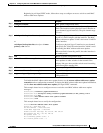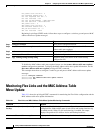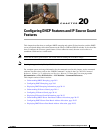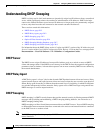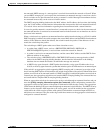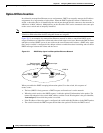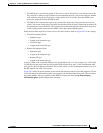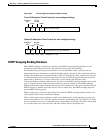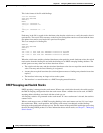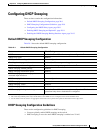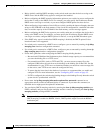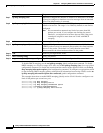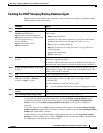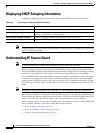
20-7
Catalyst 2960 and 2960-S Switch Software Configuration Guide
OL-8603-09
Chapter 20 Configuring DHCP Features and IP Source Guard Features
Understanding DHCP Snooping
Figure 20-3 User-Configured Suboption Packet Formats
DHCP Snooping Binding Database
When DHCP snooping is enabled, the switch uses the DHCP snooping binding database to store
information about untrusted interfaces. The database can have up to 8192 bindings.
Each database entry (binding) has an IP address, an associated MAC address, the lease time (in
hexadecimal format), the interface to which the binding applies, and the VLAN to which the interface
belongs. The database agent stores the bindings in a file at a configured location. At the end of each entry
is a checksum that accounts for all the bytes from the start of the file through all the bytes associated
with the entry. Each entry is 72 bytes, followed by a space and then the checksum value.
To keep the bindings when the switch reloads, you must use the DHCP snooping database agent. If the
agent is disabled, dynamic ARP inspection or IP source guard is enabled, and the DHCP snooping
binding database has dynamic bindings, the switch loses its connectivity. If the agent is disabled and only
DHCP snooping is enabled, the switch does not lose its connectivity, but DHCP snooping might not
prevent DHCP spoofing attacks.
When reloading, the switch reads the binding file to build the DHCP snooping binding database. The
switch updates the file when the database changes.
When a switch learns of new bindings or when it loses bindings, the switch immediately updates the
entries in the database. The switch also updates the entries in the binding file. The frequency at which
the file is updated is based on a configurable delay, and the updates are batched. If the file is not updated
in a specified time (set by the write-delay and abort-timeout values), the update stops.
Length Length
Circuit
ID type
Suboption
type
Circuit ID Suboption Frame Format (for user-configured string):
Remote ID Suboption Frame Format (for user-configured string):
Suboption
type
Length Length
Remote
ID type
145774
N1N+2 1
N1N+2 2
ASCII Circuit ID string
1 byte 1 byte 1 byte N bytes (N = 3-63)
ASCII Remote ID string or hostname
N bytes (N = 1-63)
1 byte
1 byte 1 byte 1 byte1 byte



